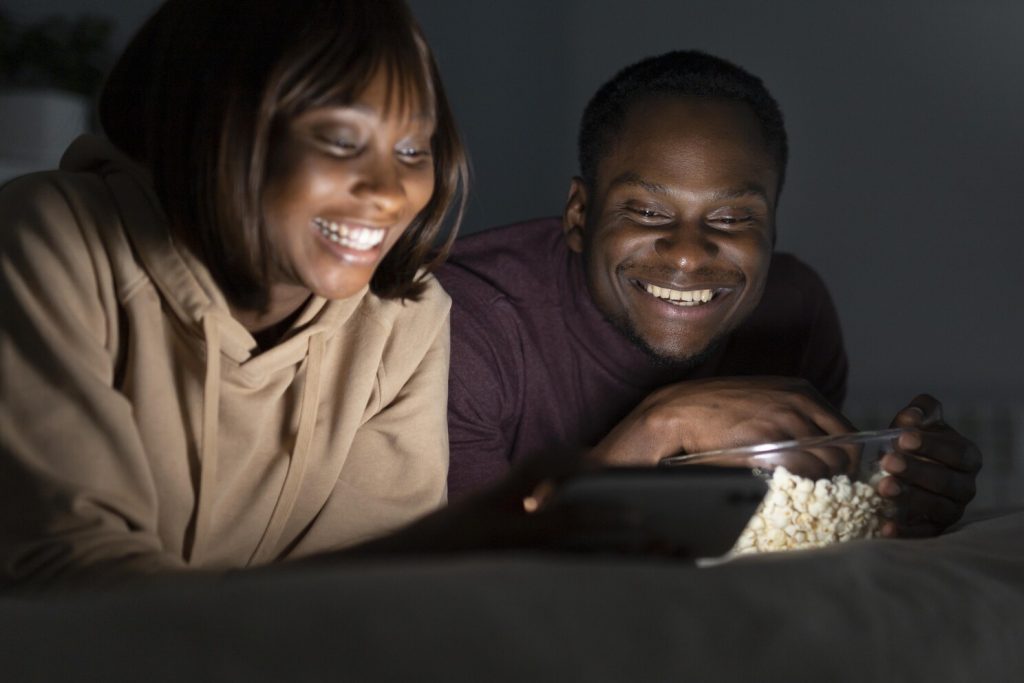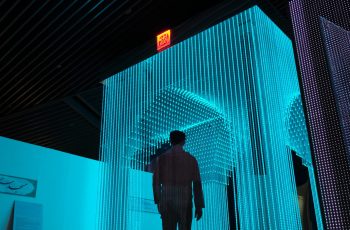Binge-watching is not your fault!
We're biologically hardwired to LOVE ❤️ video
Our brains are visual encoding machines. Visual information accounts for over 90% of the information processed by our brains. Rather than telling you, let me show you.
Check out this photo.

Now read this text:
A warm sunny day. A couple on their vacation rowing in a yellow kayak. A breeze of warm air touches their skin. You can see the white sand through the clear water. The couple floats as the wind gently carries them towards a tropical island.
That scenario description takes roughly 20 seconds to read on average. In milliseconds, your brain can process all of the information in the image. Your brain processes information about 60,000 times quicker than text. It’s why you’d rather watch a product demo than read an instruction manual. We rely on this process for faster input and better recollection, especially when combined with the chemicals generated when we view videos.
We can recall information more easily
Have you ever read a whole page of a book and then realized you have no idea what you’ve just read? After that, you have to waste time going back to re-read stuff you’ve previously seen. Regression is the term for this phenomenon. When reading printed material, regression may be annoying, but films nearly completely remove it.

According to studies, audiences recall 95% of a video’s information compared to 10% while reading text. In addition, according to Hubspot, 80 percent of clients recall a video they saw in the previous month. Videos enable you to bundle the information you’re attempting to convey into a short story that engages viewers in a way that text alone cannot.
People are significantly more likely to recall a story than a list of facts, therefore this makes them more memorable.
Video also plays to the strengths of the vast majority of people. The majority of individuals use visual supports to learn, and 65 % of people identify as visual learners. This learning method is accommodated by videos, which help people recall knowledge better than a massive wall of text.
The reward system in our brain 🧠
While we conceive of ourselves as complicated beings in control of our own lives, neuroscience continues to show that someone else – brain chemicals – is truly in charge. They are the naturally occurring substances that our brain employs to encourage and reward all of our decisions. The action of these chemicals is a two-step chemical reaction. To begin, our brain must get our attention. This is when cortisol enters the picture. It’s mostly created in moments of distress, such as when we hear a distressing narrative, to alert us to potential risks in our environment. Essentially, most marketing relies on the awareness reaction: Offer an example of a problem that your business or brand can solve. Getting someone’s attention, though, isn’t enough. To put these ideas into action, our brains must also learn and remember. Our bodies reward us with dopamine, the pleasure neurotransmitter, to do this. Dopamine regulates our emotional reactions and keeps us interested when it comes to storytelling. When we follow a story, our brains employ dopamine to reward us. While cortisol aids in alertness and the introduction of new ideas, dopamine is the reward our brains bestow on our bodies as we persevere on our trip. So, while telling a story and developing a narrative may appear to be a creative option, science has proven that it is a strong method of getting action.
❤️ The love hormone ❤️
As social creatures, we depend on others for our survival and happiness. This hormone, oxytocin, is produced by touch, music, and exercise. It’s a naturally produced neurochemical in the body that signals the brain that “it’s okay to approach others.” It makes us feel empathy and encourages us to work together with others. Because it is created after childbirth, this hormone is known as the “love hormone.” According to a Harvard study, Video also releases this hormone.

This study found that character-driven stories do consistently cause oxytocin synthesis.
To motivate a desire to help others, a story must first sustain attention. Attention is a precious resource in the brain – by building tension throughout the story we create a desire to help others. If the narrative can build such tension, it is likely that engaged viewers will begin to experience the emotions of the characters in it, and that they will continue to mimic those characters’ feelings and actions after the story ends. This explains your sensation of joy and relief and when Andy Dufresne (Tim Robbins) is escaping the prison in The Shawshank Redemption.
Shared experience
We don’t usually consider ourselves to be in sync with complete strangers. Aren’t we all unique individuals with our own set of experiences and feelings? When it comes to video, though, we are not as unique as you may believe. In a Yale research that analyzed the brain activity of a whole movie crowd, they discovered that up to 70% of their cerebral cortex brain activity was synchronized at any given time. They observed synchronized activity in the frontal cortex of the limbic system, which links actions with emotional reactions.

Basically, the audience sensed the same emotional call to action through video at the same time. It’s the mental counterpart of a room erupting in applause, a communal movement based on overpowering emotion. We don’t simply want the other person to watch the video; we want them to feel the same emotions we do.
A story only lives when someone wants to listen. Take a time to consider how your narrative can spark a dialogue before you go back to your next Netflix marathon (and blame it all on your chemically-induced head).
We’re here to answer your questions, whether you’ve never used video as part of your company strategy before or are eager to create fresh content that stands out.







